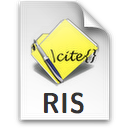

| ORIGINAL
ARTICLE |
 |
 |
Heavy metals are the elements that are present in the environment naturally, with the development of industries in the world, there is a drastic increase of heavy metals in the biosphere. Among the heavy metals, lead (Pb) is the most toxic metal that easily gets accumulated in the soil and sediments. Lead is not an important element for plant growth but it gets easily absorbed and accumulated in different parts of the plant. In this study, Setaria italica (foxtail millet - CO (Te) 7) is treated with different concentrations of lead to evaluate the changes in the morphological growth parameters such as rate of percentage of germination, Tolerance Index (TI) and phytotoxicity. The germination percentage is comparatively greater in the control plant and gradually decreases as the concentration of Pb increases. The length of root and shoot, the amount of fresh weight and dry weight also decrease with the increase in the concentration of heavy metals. The root length and shoot length in the control on the 45th day were 20.2±0.16 and 48.7±0.24 whereas in the maximum concentration of metal (250 mg/kg) it showed a minimum reading of 11.1±0.43 and 27.3±0.33 respectively. The percentage of phytotoxicity increases as the concentration of the metal increases. Tolerance indices decrease as the percentage of phytotoxicity increases.
Key words: Foxtail millet, Germination percentage, Heavy metals, Lead, Morphology and Phytotoxicty
